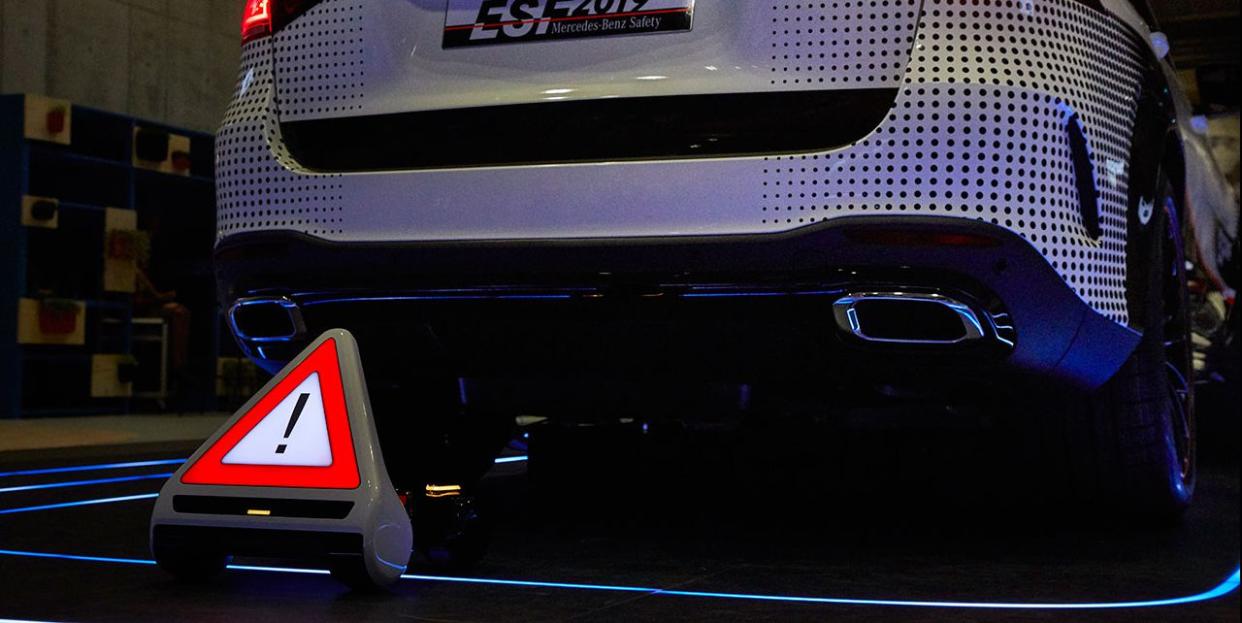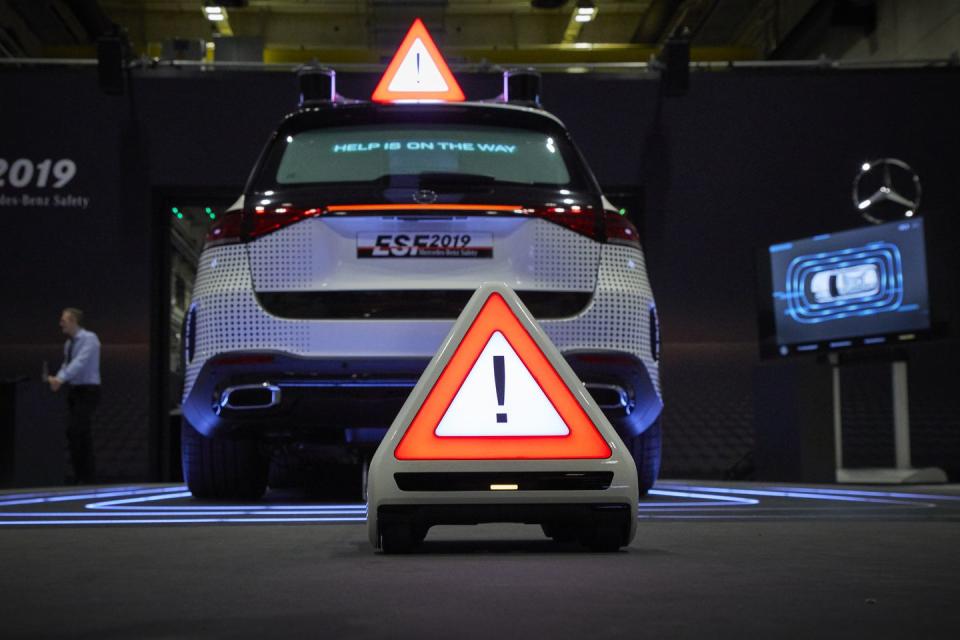If You Crash a Mercedes-Benz in the Future, It Could Deploy a Robot to Warn Other Drivers

Like a Roomba vacuum, this Mercedes-Benz concept robot deploys on its own after a big mess (in this case, a car crash).
The robot is equipped with a glowing safety triangle to warn other drivers of a recent crash.
Mercedes showed off the cute robot as part of its ESF 2019 safety concept, along with nearly a dozen other advanced, forward-thinking future safety features.
Sometimes, a carmaker slips a gem into a broadly run-of-the-mill exercise in previewing a future technology. In the case of Mercedes-Benz's ESF 2019 concept, a showcase of tomorrow's safety technologies that we looked at up close, that gem is this: a tiny robot that motors out of the safety vehicle concept's rear end, backtracks up the road, and warns other drivers of the danger posed by a crashed vehicle up ahead.
Mercedes-Benz intriguingly refers to the cute little pseudo-Roomba as "Warning Triangle 4.0." We have no idea what versions 2.0 or 3.0 looked like-if they ever existed-but we're fairly certain Warning Triangle 1.0 is, um, a regular, nonrobotic warning triangle. You know, the reflective, three-sided thing that comes in practically every roadside emergency kit.

Amusing though it may be, Warning Triangle 4.0, or WT 4.0 as we'll call it, serves a noble purpose: warning other drivers that there is a hazard ahead-such as your crashed vehicle. As you can imagine, after certain accidents, occupants might not be in any condition to exit the vehicle and set up road triangles or flares; Mercedes also is thinking of the driverless future, when a self-driving vehicle might crash-who's to deploy the triangle in that scenario? For either situation, the WT 4.0 bridges the gap between the accident's occurrence and authorities arriving on the scene.
On the ESF 2019 concept, the WT 4.0 lives in a little binnacle beneath the rear bumper. When deployed, that binnacle lowers, ramp style, toward the ground, releasing the robot. The bot then scoots a ways behind the vehicle while raising a backlit triangle. It is backstopped, at least on the ESF concept, by car-to-X communication.
For those other vehicles not connected to the grid, so to speak, the ESF boasts a larger triangle that rises up from the car's roof, as well as by a rear window capable of displaying messages. Bright-orange electroluminescent paint strips on the sides of the ESF concept are its ultimate post-crash communication fallback, should either the adorable robot triangle or the rooftop triangle be out of commission and car-to-X links severed.
Will the Warning Triangle 4.0 become a real safety feature? Possibly. The entire point of the ESF 2019 concept was to preview features that might be relevant to drivers of the future, who by then will think of self-driving cars as normal. As with any new tech, however, autonomous driving brings with it a new set of opportunities for looking at automotive safety in a new light-one that involves less human intervention, whether that's before, during, or after a crash.
('You Might Also Like',)

